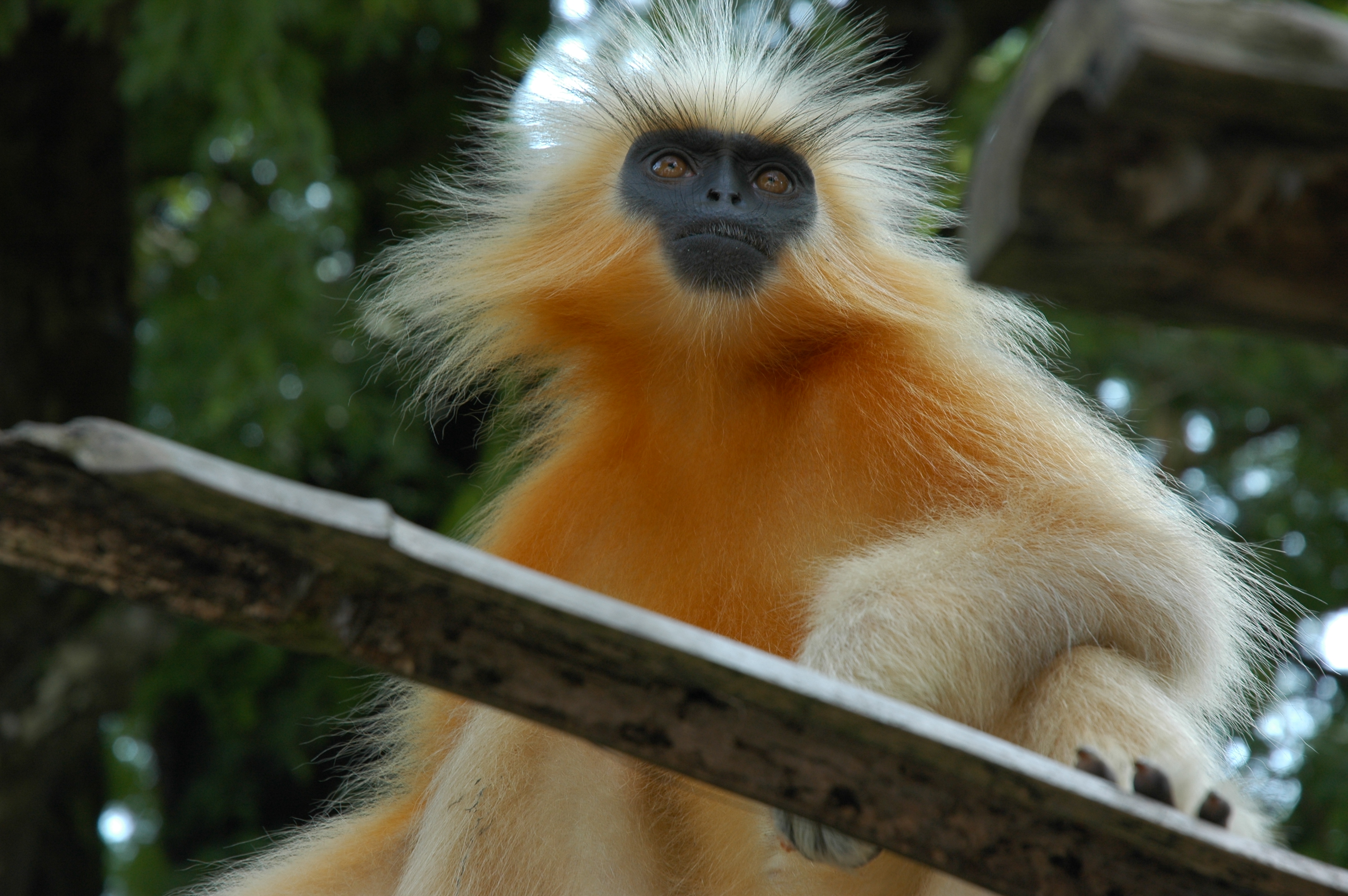- Gee's Golden Langur
Taxobox
name = Gee's Golden LangurMSW3 Groves|pages=176]
status = EN
status_system = iucn3.1
trend = down
status_ref = IUCN2006|assessors=Participants of CBSG CAMP workshop: Status of South Asian Primates (March 2002)|year=2004|id=22037|title=Trachypithecus geei|downloaded=11 May 2006 Database entry includes justification for why this species is endangered]

image_width = 250px
regnum =Animal ia
phylum =Chordata
classis =Mammal ia
ordo =Primate s
familia =Cercopithecidae
genus = "Trachypithecus "
species_group = "T. pileatus"
species = "T. geei"
binomial = "Trachypithecus geei"
binomial_authority = (Khajuria , 1956)Gee's Golden Langur ("Trachypithecus geei"), or simply the Golden Langur, is an
Old World monkey found in a small region of westernAssam ,India and in the neighboring foothills of the Black Mountains ofBhutan .Harvard reference | last1 = Srivastava | first1 = A. | last2 = Biswas | first2 = J. | last3 = Das | first3 = J. | last4 = Bujarbarua | first4 = P. | title = Status and Distribution of Golden Langurs ("Trachypithecus geei") in Assam, India | journal = American Journal of Primatology | volume = 55 | issue = 1 | year = 2001 | pages = 15-23 | doi = 10.1002/ajp.1035] It is one of the most endangered primate species of India.Long considered sacred by many Himalayan peoples, the Golden Langur was first brought to the attention of science by the naturalist E. P. Gee in the 1950s. [Gee, E. P. (1961). The distribution and feeding habit of golden langur, "Presbytis geei"(Khajuria, 1956). J. Bombay Nat. His. Soc. 53: 252–254.] The Golden Langur is known for its rich golden to bright creamish hair, a black face and a very long tail measuring up to 50 cm in length. For the most part, thelangur is confined to high trees where its long tail serves as a balancer when it leaps across branches. During the rainy season it obtains water from dew and rain drenched leaves. Its diet isherbivorous , consisting of ripe and unripefruit s, mature and young leaves, seeds, buds andflower s.The region of its distribution is very small, limited to the area bounded on the south by the
Brahmaputra river , on the east by theManas river , on the west by the "Sankosh" river, all inAssam ,India , and on the north by the Black Mountains ofBhutan . These biogeographical barriers are believed to have led to the radiation of species from closely related capped langurs ("Trachypithecus pileatus"). [Wangchuk, Tashi; Inouye, David W.; Hare, Matthew P.(2008) The Emergence of an Endangered Species: Evolution and Phylogeny of the "Trachypithecus geei" of Bhutan. International Journal of Primatology 29(3):565-582] It generally lives in troops of about 8 (but sometimes up to 50) with several females to each adult male. The Golden Langur is currentlyendangered , the total Indian population in 2001 was recorded to be 1,064 individuals, with the relative dearth of infants and juveniles indicating a declining population and with the habitat being degraded by human activity. A fragmented but protected population in a rubber plantation in Nayakgaon, Kokrajhar district of Assam increased in population from 38 individuals in 1997 to 52 in 2002. The population has also adapted to feeding on dry rubber seeds. [Rekha Medhi, Dilip Chetry, P. C. Bhattacharjee and B. N. Patiri (2004) Status of "Trachypithecus geei" in a Rubber Plantation in Western Assam, India. International Journal of Primatology 25(6):1331-1337]There are two recognized subspecies of this
lutung :
* "Trachypithecus geei geei"
* "Trachypithecus geei bhutanensis"References
External links
*ARKive - [http://www.arkive.org/species/GES/mammals/Trachypithecus_geei/ images and movies of the golden langur "(Trachypithecus geei)"]
* [http://members.tripod.com/uakari/trachypithecus_geei.html The Primata:Golden Langur (Trachypithecus geei)]
Wikimedia Foundation. 2010.
